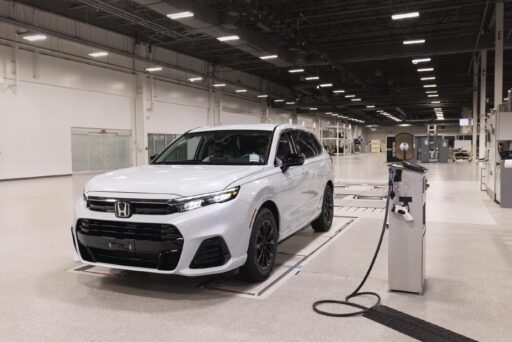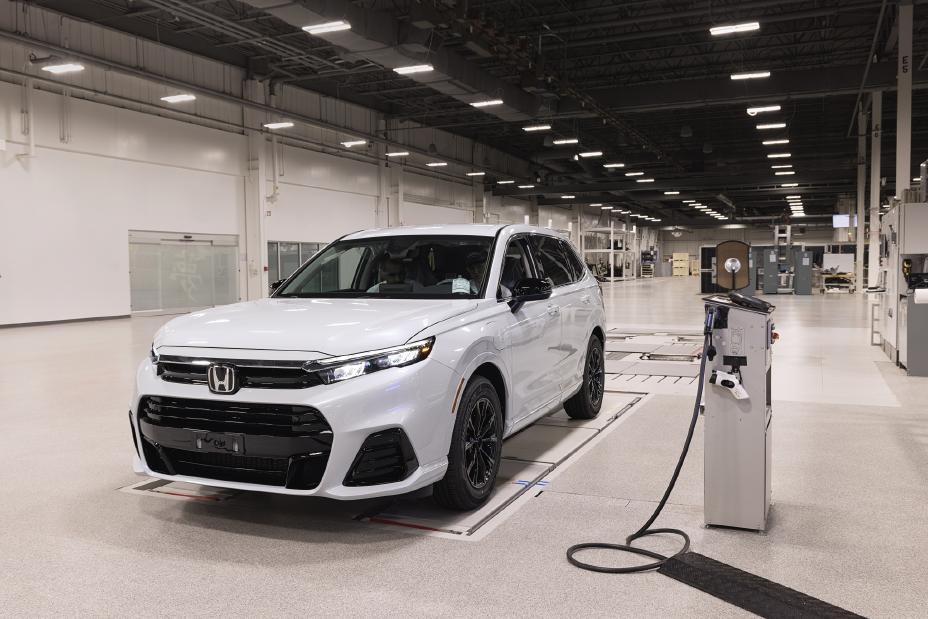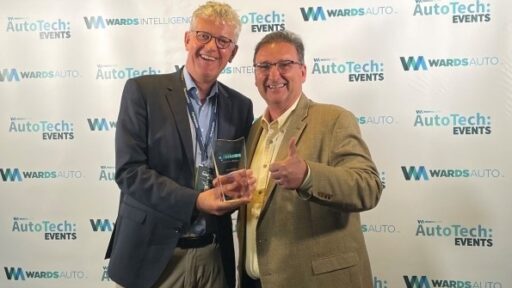Honda has officially kicked off the production of the all-new 2025 CR-V e, a groundbreaking fuel cell electric vehicle, at the Performance Manufacturing Center (PMC) in Marysville, Ohio.
This makes it the first and only FCEV manufactured in America. Building on over two decades of expertise in fuel cell technology, starting with the 2003 Honda FCX—the world’s first zero-emission fuel cell electric vehicle to receive government certification—Honda continues to lead in innovation.
The CR-V eis notable for being the first U.S. production hydrogen FCEV that integrates a newly developed American-made fuel cell system with plug-in EV charging capability.
READ MORE: Bugatti CEO Confirms Commitment to Gasoline Engines, Possible Fuel Station Owner Homes
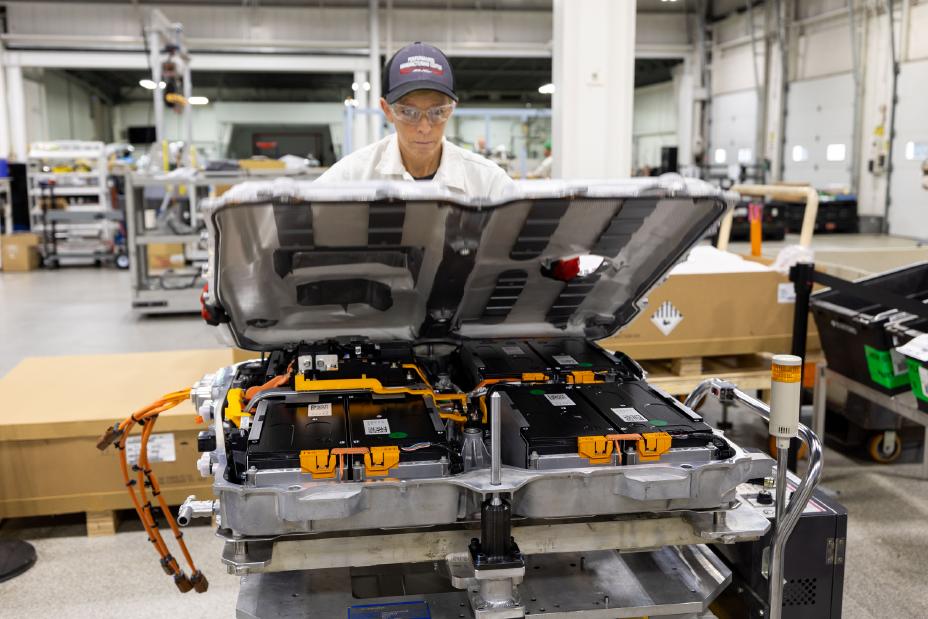
This compact CUV delivers a fun driving experience and boasts a 270-mile EPA driving range. It also provides up to 29 miles of EV driving for city commutes and the convenience of rapid hydrogen refueling for extended journeys.
Patrick McIntyre, the lead of PMC, expressed pride in the team’s transition from crafting the Acura NSX to producing this state-of-the-art CR-V e, emphasizing Honda’s commitment to achieving carbon neutrality.
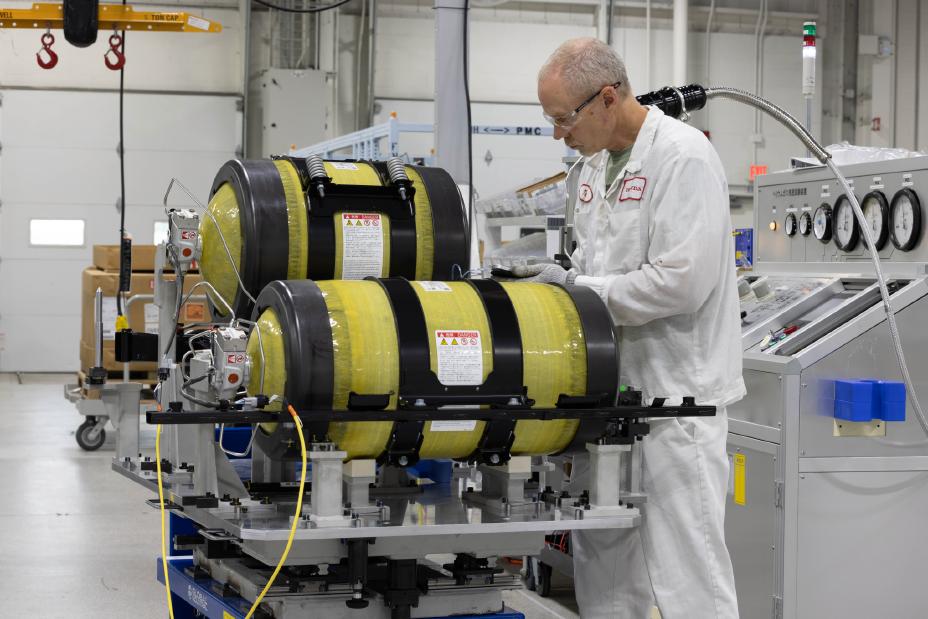
The new fuel cell system, co-developed with General Motors at Fuel Cell System Manufacturing LLC in Michigan, is significantly more efficient, durable, and cost-effective than its predecessor used in the Honda Clarity Fuel Cell.
The transition to producing the CR-V eat PMC involved several key initiatives and innovations. Technicians adapted to new assembly processes unique to the dual power systems of the vehicle, managing the integration of hydrogen tanks, high-pressure piping, and the under-floor battery. A complete overhaul of the Weld Department was necessary, transitioning from aluminum to multi-material unibody construction with new steel welding robots and manual MIG welding for precision.
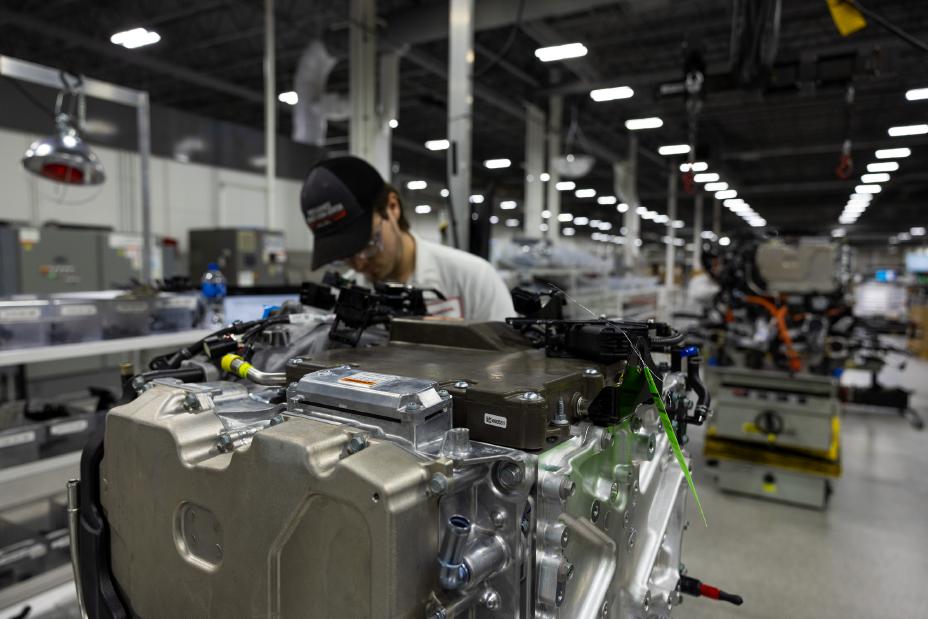
Paint system modifications were also essential to accommodate the larger, all-steel body of the CR-V e. Engineers redesigned the E-coat dip tank and implemented a robust arm to handle the heavier frame during the sealing process, ensuring comprehensive corrosion protection and a high-quality paint finish.
The CR-V eretains the CR-V’s legacy as America’s best-selling CUV for the past 25 years, offering top-class cabin space, cargo capacity, and power. Honda engineers have optimized the steering and suspension to match the sporty driving experience of turbo and hybrid-powered CR-V models.
The vehicle also features selectable drive modes, including EV modes for efficiency and a Sport mode for enhanced acceleration and responsiveness. Refueling with hydrogen is as quick as filling a gas tank, and the plug-in feature allows a full recharge in just 1.8 hours, adding 29 miles of battery-powered range for short trips.
The CR-V eincludes the innovative Honda Power Supply Connector, enabling the CUV to power small appliances, tools, camping equipment, or even charge the new Honda Motocompacto e-scooter.
This vehicle is a significant step in Honda’s broader hydrogen business strategy, which encompasses fuel cell electric vehicles, commercial vehicles, stationary power stations, and construction machinery.
Honda is collaborating with various partners to expand these applications, recently showcasing a Class 8 Hydrogen Fuel Cell Truck Concept and initiating testing of a stationary fuel cell power station in California.
Honda’s vision is to achieve 100% battery-electric and fuel cell electric vehicle sales by 2040. Central to this goal is the establishment of the “Honda EV Hub” in Ohio, aimed at enhancing EV production capabilities across North America.
Honda’s comprehensive strategy includes a substantial $11 billion investment in Canada to strengthen its EV supply system in anticipation of increased demand.
Despite the shift towards electrification, Honda remains committed to maintaining current ICE and hybrid-electric vehicle production to meet ongoing consumer demand, ensuring employment stability across all production facilities during this transition.
Honda’s extensive manufacturing presence in America dates back over 40 years, with the company producing over 30 million vehicles in the U.S. to date. With significant investments and a robust network of suppliers, Honda continues to be a major player in the American manufacturing landscape, supporting over 23,000 associates and collaborating with 600 U.S. original equipment suppliers. For further information, please visit Honda’s website.
READ MORE: Vintage Bentley Selling for £128,000 with One Drawback: No Engine
Subscribe today for the freshest car news delivered to your inbox
